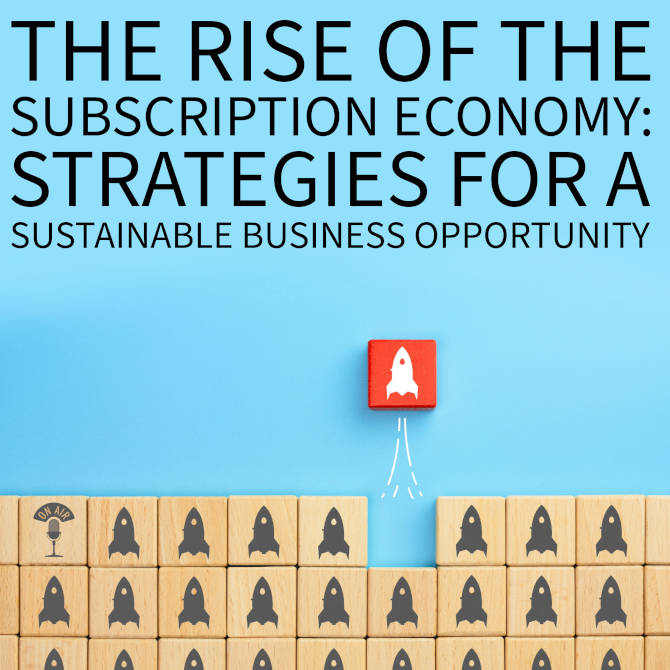Introduction to E-Commerce Psychology
Have you ever stopped to think about what makes people buy things online? What motivates them to click the add to cart button and what keeps them coming back for more?
Today, we’re going to explore the many factors that influence consumer behaviour in the world of e-commerce.
Case Study: Marks and Spencer’s E-Commerce Success
A few years back, I was engaged in creating a new website specifically around a new celebrity lingerie collection by a former client called Marks and Spencer’s. Now their marketing team were really on point and without any doubt, they truly understood the importance of psychology around e-commerce.
They knew their standards, that their website had to be user-friendly, their customer services had to be top-notch, and their presence on social media had to be strong, but they didn’t just stop there. They went the extra mile and invested in understanding their customers on a psychological basis. They conducted surveys, analysed consumer behaviour, and even hired a psychologist to help them better understand their customers.
And the results do speak for themselves, their website traffic skyrocketed, their conversion rates improved, and they even saw a boost in repeat business all because they took the time to understand the psychology of their customers.
This specific case study highlights the key elements of e-commerce psychology from the impacts of technology and the role of customer experience to the influence of social media.
The Importance of Customer Psychology in E-Commerce
By understanding the psychology of their customers, they were able to create a better online shopping experience, which improved their conversion rates and fostered an even more loyal customer base saying that they already have an amazing loyal customer base to start with. So, whether you’re an established business like Marks and Spencer’s, or just starting out in the world of e-commerce, understanding the psychology of your customers is key to success.
E-Commerce on a Budget: Understanding Your Customers
Sadly, not all of us have their specific budget to do this. Later on in the episode, I’ll discuss how this can be done on a budget. No one can argue that the world of online shopping has exploded, making it all the more important and crucial for businesses to grasp on what makes these digital customers tick.
And that’s where the fun actually begins by studying the psychology behind the e-commerce, we can uncover the reason why customers make certain decisions, what drives them to make purchases and what factors influence their behaviour when shopping online. So, we know the importance of understanding e-commerce customer psychology.
Key Aspects of Online Shopping Perception
Let’s delve into the perception of online shopping. There are pretty much three key aspects to keep in mind, and they’re in, in their own sort of category, trust and security concerns, convenience and speed, and Product information and availability when we go online, we want to feel that information is secure, but with so much of our personal information floating around on the internet, it’s no wonder that consumers have concerns about the safety of the information and their money when shopping online business needs need to be aware of these concerns and take measures to assure their customers that the information and transactions are protected.
There are far too many companies that don’t take this into consideration, especially if it eats into their budget. You know, I’ve known many a business where the actual version of the software needs to be updated and I’ve turned around and said, you know, you need to update your, your software and their security patches and all of that.
And they’ve been quite objectionable down to being that it costs money to do that, and the thing is, it’s not about the money, it’s about protecting your customers and also protecting your website. So, we mentioned convenience and speed. Online shopping offers a level of convenience that bricks, and mortar stores simply can’t offer. It cannot match with just a couple of clicks, you can have the purchases delivered right to your door.
Speed is also a big factor as consumers expect their orders to arrive quickly without any form of hassle. So, we can see in situations like this, if you have a terrible delivery service, how it can actually have a massive impact on the running of your business.
Last but not least, product information and availability. Online shopping gives consumers access to a wealth of information about the products they’re interested in purchasing. From detailed descriptions to customer reviews, consumers can easily compare and contrast different products to find the ones that are just right for them.
I’m sure you all surf around and find the best prices and the best products that you can. Plus, with the vast virtual marketplaces, consumers can find the products they want when they want them without having to worry about store hours or availability. In short, the perception of online shopping is all about finding the perfect balance between trust, convenience, speed, and access to information.
The Consumer Decision-Making Process
And that’s just the tip of the iceberg when it comes to the psychology of the e-commerce customers. So, we should sort of dive into the consumer decision-making process. This is more of a four-prong stage. You have awareness and interest. Evaluation of alternatives, purchase decisions and post-purchase evaluations.
So, if we look at awareness and interests, this is where the consumer first becomes aware of the product or the service and begins to show interest in it. This could be through the advertising that you’re doing or recommendations from friends or simply just browsing online. And as we know, But, you know, we always look at the alternatives so we can say evaluation of the alternatives.
Here comes the consumer and the consumer will weigh their options and compare different products to find the one that best meets their needs. This stage is where product information and reviews become especially important as consumers use this information to make an informed decision. I was looking at buying a new microphone for these specific podcasts.
And what was I doing? I was going on YouTube and looking and listening to all the reviews about probably every microphone that’s ever been sold. You do way too much research. Then we come to the purchase decision mode. This is where the consumer decides whether or not to make a purchase. If they do, they choose the product and then complete the full transaction.
After the consumer has made the purchase, they reflect on their decision and determine whether or not it was a good one. This stage is crucial as it can impact the future purchasing decisions and determine whether the consumer will become a repeat customer. So, we’ve broken down the consumer’s decision-making process into four easy elements to digest.
Factors Influencing Consumer Behaviour in E-Commerce
Now, that’s just a taste of what goes on in the mind of an e commerce customer. It’s obviously considerably deeper. Let’s explore the factors that influence the consumer’s behaviour. We’re going to cover four areas in this one. Personal factors, psychology factors, social factors, and cultural factors. Now the personal factors, this includes things like income, education, and personal values.
These factors play a significant role in determining what products and services, the consumer is interested in and what they’re willing to spend their money on. Now, when we talk about psychological factors, this includes things like motivation, perception and attitudes. These factors impact how a consumer perceives a product or service and how they form attitudes about it, which then has the social factors in there as well.
This includes things like family, friends, and social networks. Consumers are often influenced by the opinions and experience of those around them. And this can have a big impact on their purchase decisions. The same as I was talking about microphones and I’m on YouTube looking at the reviews. Cultural factors.
This includes things like cultural values, beliefs, and customs. Culture plays a significant role in shaping consumer behaviour and can impact what Products and services consumers are interested in and how they make their purchase decisions.
That’s the four key factors that influence consumer’s behaviour. Understanding these factors is another key to unlocking the mystery of why e commerce customers behave the way they do. We now have to dig even deeper into the factors that influence consumer’s behaviour.
The Impact of Technology on E-Commerce
If we take a look at the impact of technology on e-commerce, this area is going to cover three sort of subjects, availability of information, the ease of use of technology, and the increase of accessibility of e-commerce.
Firstly, the availability of information. With the rise of the internet, consumers have access to more information about products and services than they have ever before. From detailed product descriptions to customer reviews, customers can easily research and compare different products before making a purchase.
Secondly, the ease of the use of technology has made online shopping easier and more convenient than ever from mobile apps to websites optimized for mobile devices, consumers can shop on the go and make purchases within just a few taps.
And last but not least, the increase of accessibility of e-commerce with the growth of the Internet and the proliferation of mobile diverses, e-commerce has become more accessible to a wider range of consumer. This has led a surge in online shopping and has opened up new opportunities for businesses to reach customers all over the world.
Exploring the Role of Customer Experience in E-Commerce
Let’s delve into the role of customer experience. This section will cover three key aspects, the importance of a positive experience, the impact of customer service, and the influence of user-generated content.
So firstly, the importance of a positive experience in the world of e-commerce customers have come to expect a very seamless and enjoyable shopping experience. From the easy navigation and intuitive design to fast and reliable delivery. A positive customer experience is essential for building a brand loyalty and encouraging repeat purchases.
Then we come across the impacts of customer service. When things go wrong, customers want to know that they can get help quickly and easily. That’s why great customer service is so important in e-commerce from obviously the live chat support to easy-to-use return policies. Businesses that prioritize customer service are more likely to retain customers and earn positive reviews.
Now I’ve known some businesses that have made it incredibly hard to return items. They have to fill out forms, fax them. And this is in today’s age, crazy. And lastly, let’s look at the influence of user-generated content from product reviews to social media posts. User-generated content plays a massive role in shaping the customer experience.
By leveraging the power of user-generated content, businesses can build trust, engage with the customer, and obviously drive the most important part of having an e-commerce business sales.
Now that we’ve taken a closer look at the role of customer experience, let’s explore the impact of social media on e-commerce.
The Significant Impact of Social Media on E-Commerce
In this section, we cover another three key areas, the power of social media for businesses, the influence of social media on consumer behaviour, and the role of social media in customer engagement. Power of social media for business. What actually is it from reaching new customers to building brand awareness.
Social media is a powerful tool for businesses looking to succeed in e-commerce by leveraging the reach and engagement of popular platforms like Facebook, Twitter, Instagram, TikTok- businesses can connect with their customers, showcase their products and drive sales. And obviously that has an influence on social media on the consumer behaviour.
Social media has changed the way consumers discover and research products from scrolling through Instagram to reading product reviews on Twitter. Consumers are using social media to inform their purchasing decisions and shape their opinions about brands.
And then lastly, the role of social media and customer engagement from responding to customers inquiries to running social media contests and promotions, businesses can use social media to engage with their customers and build long lasting relationships.
Now, there’s lots of tools out there that can assist you for doing that by engaging with customers on social media, businesses can foster loyalty, drive repeat purchasing and build a loyal customer base. The same way as Marks and Spencers was doing that. So that’s the key outlines to be looking at.
Affordable Strategies for Understanding Customer Psychology
Now, while investing is in understanding the psychology of your customers can be beneficial, it’s true that it can also be extremely expensive. However, there are several ways to gather this information about customer psychology without breaking the bank. It’s what the majority of businesses have to think about.
Utilise the customer feedback process and asking customers for opinions on your website, products and customer services. You know, you can do this through custom surveys, feedback forms, and even social media. And of course, you know, we have to utilize website analytics to track our customers behaviour on your site. Such as which page they visit, how long they stay on the site and what products do they purchase. I’m still amazed how many companies don’t look at their Google Analytics or whatever analytics they’re utilising.
Now, here’s an interesting one. You can collaborate with other businesses. If you’re selling candles and somebody else is selling something slightly different, but it’s a homeware product, why not actually call them up and join forces. So by joining forces with other businesses in your industry, share the information insights about your customer psychology, this can help you understand what works and what doesn’t without having to sort of invest expensive research and by collaborating, you’re helping both, there’s an incentive for them to collaborate because they’re going to learn about that as well. And you’re not in the same market, but you’re in the same market area. So, it’s a win-win situation.
Now I have an interest in psychology myself, but people do ask me, you know, how do I go about doing something like this? And there are many online resources available to provide valuable information on consumer behaviour and psychology, including academic journals, online forums and professional associations. So, it’s always worth doing a search and finding some of those.
And as we said about Marks and Spencers, we don’t necessarily have their budgets to be able to employ a psychologist. So, it’s worth looking into hiring a freelance psychologist who can help you understand your customers on a budget. Freelancers are often more affordable than large consulting. Firms, and they can still provide valuable insight and recommendations.
Now by just utilising these more budget friendly methods you can still gather valuable information about your customer psychology and improve your e-commerce strategy. Remember the goal is to understand your customers and create a better online shopping experience regardless of your budget.
Conclusion and Invitation for Feedback
We’ve now come to the end of this podcast, and we would love to hear your feedback on our episodes and any questions you have about e-commerce branding and marketing, please leave your comments on our channel and we’ll do our very best to address them in future podcasts. Thanks for tuning in and we’ll see you next time on the ecommerce insiders podcast.











